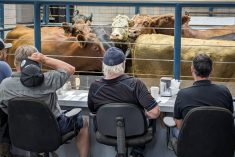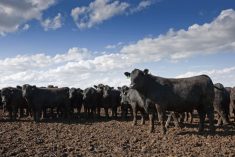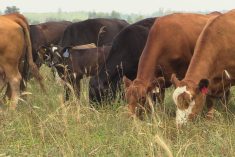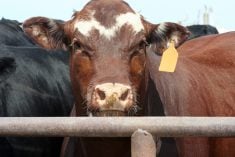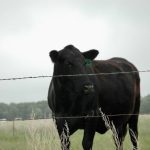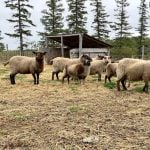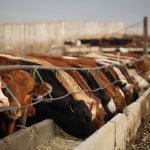Weaker wholesale beef values, along with softer fed cattle prices, set a negative tone for the feeder cattle market this past week.
Western Canadian feeder markets were trading $4-$8 below week-ago levels, with calves trading as much as $10 lower in some cases. Producers can become nauseous watching these live cattle futures, but this is nothing compared to the ongoing thorn of negative pen closeouts. Feedlots have been scale-down buyers hoping for a turnaround but this week, many just closed their eyes toward all markets. U.S. prices were also down $5-$8 on average, limiting order flow into Western Canada. The sharp year-over-year decrease in feeder cattle exports to the U.S. is causing more cattle to be fed domestically. The market is adjusting to this surprising jump in available supplies.
Read Also

U.S. grains: CBOT soybeans, corn, wheat fall in USDA data aftermath
Chicago grains took a dive on Friday, following a closely watched U.S. government crop report and the release of export data that could provide clues into Chinese buying.
Calves coming onto the market at this time of year appear to be carrying more flesh, resulting in the sharper decline. A smaller group of red white-face steers averaging just under 600 lbs. sold for $220 in central Alberta; heifers of similar quality averaging just under 550 lbs. sold for $201 in the Lethbridge area. The sharp drop in live cattle futures weighed heavily on shorter-keep replacements. In east-central Alberta, mixed steers averaging 775 lbs. were quoted at $200, while their sisters of the same weight traded near $185. Larger-frame Simmental steers with medium flesh averaging 875 lbs. were quoted at $186 in southern Alberta.
The U.S. Department of Agriculture’s latest acreage survey projected a sharp year-over-year increase in U.S. corn acres, which will result in burdensome supplies next fall. Alberta’s cost per pound gains should drop by 10-15 cents longer-term and we’ll see corn readily trade into Western Canada. Ownership of these lighter calves may look brighter a month or two from now. Feeder cattle futures took a sharp jump after the report, but cash values were unchanged.
— Jerry Klassen is manager of the Canadian office for Swiss-based grain trader GAP SA Grains and Produits. He is also president and founder of Resilient Capital, which specializes in proprietary commodity futures trading and commodity market analysis. Jerry owns farmland in Manitoba and Saskatchewan but grew up on a mixed farm/feedlot operation in southern Alberta, which keeps him close to the grassroots level of grain and cattle production. Jerry is a graduate of the University of Alberta. He can be reached at 204-504-8339.






